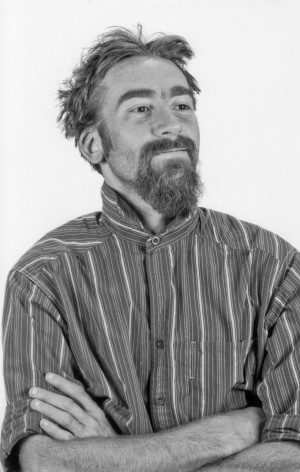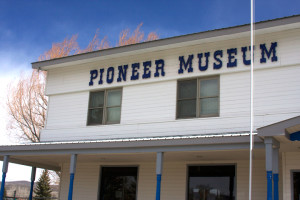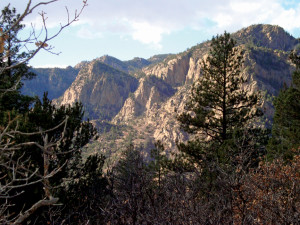By Virginia McConnell Simmons
The Roaring Twenties, the Charleston, and the speakeasies never happened as far as folks in the San Luis Valley could tell, but on the whole, this high valley was not dry.
In the 1920s, the agricultural economy was limping everywhere and mining was severely crippled at places like Creede; and that was before the market crashed and the mines shut down completely in 1929. As if that were not bad enough, this was the era of Prohibition. In fact, it had already begun in 1916 in some of Colorado’s cities and towns, where reformers outnumbered rugged individualists.
The rural Valley differed vastly from urban Denver and Pueblo. In those cities, people had “soft-drink parlors” and speakeasies, and they also had organized crime, murders and federal agents rounding up gangsters. In contrast, since the days of Taos Lightning, the Valley’s pobladores, German and Swedish homesteaders, miners and railroad workers, had been making, unimpeded, wine and whiskey at home for their own consumption, weddings and celebrations. If not grapes and rye, they had chokecherries and wheat and barley and potatoes and corn from which to make alcohol.
These were people living in tightly knit, interrelated groups who had strong traditions. And they had neighbors and relatives who were the local lawmen, and who tended to look the other way. As a result, when the bottles and the bars disappeared after the Eighteenth Amendment passed, clandestine stills and bootleggers filled the void.
In Colorado’s rural countryside, it was not hard to find places to hide stills: In outbuildings on farms, basements in homes, old mine adits, hunters’ camps or other out-of-the way place; although smoke could reveal an operation. At Mishak Lakes, out in the wide-open flat area west of Moffat where smoke could be a giveaway, a local rancher came up with an unusual solution for his still. A relative, who lived a few miles south, would send a signal so that the fire at the still could be doused if a State Prohibition Agent was in the area. The signal was a flare from a natural gas well that could be seen for several miles.
Game wardens and forest service workers had hard jobs that could potentially be dangerous. With only one game warden for the entire San Luis Valley, he had to provide his own vehicle and only rarely visited some areas, so he was unlikely to just stumble upon a still while driving around. Forest service workers, on the other hand, were more apt to come upon poached game or even a still unexpectedly. But the times were hard for people who lived in the backcountry, and rangers and wardens were inclined to be merciful at that time.
Warehousing and transportation were additional necessities for bootleggers. Storage places might be vegetable cellars, barns, mine tunnels, caves or simply the remoteness itself, and there were plenty of lightly populated areas all around the Valley. Years after Prohibition, a cache of bottles, some with whiskey still in them, turned up at a barn east of Monte Vista.
The railroad provided convenient transportation that made Antonito a hub for imported booze as well as its more common, legitimate traffic. Bootleggers availed themselves of the Chili Line to the south, especially at the busy little station at Tres Piedras, and of the San Juan Extension around Ignacio. Most of the products from northern New Mexico came to the San Luis Valley, while two brothers were the most active suppliers from the Western Slope. Passengers could easily carry innocent-looking packages, while milk cans could be filled with something less innocuous than dairy products.
Distribution was highly variable, ranging from the back room at a billiard parlor to a knock at the back door on a farm, a meeting on a lonely back road, or a pickup along an irrigation ditch. Surely the most innovative dealer was a garage owner at Antonito who dispensed white lightning from a gasoline pump.
The producers were as variable as the products themselves. Some distillers were far from being sophisticated, and the stuff they made was the worst kind of rut gut, dangerous to man and beast. A pathetic story about a remote homestead east of Tres Piedras tells of a farmwife who was feeding spent mash to her toddler, because, the mother claimed, it was “nutritious.” For that matter, it was not unusual to see pigs staggering around sties on farms where they had been fed mash.
Farmers with more experience and quality control also produced homemade whiskey that was suitable for their own families, select customers, and private clubs that no one talked about. Neither did anyone openly discuss what was brought into the Valley in the suitcases of elite guests at sportsmen’s lodges.
Besides the tipplers, the Valley also had residents who were strait laced teetotalers. Monte Vista had deeds with a no-liquor clause, and in communities like Manassa with many Mormons, abstinence from liquor was the rule. For these citizens, the Twenty-first Amendment repealing Prohibition in 1933 was a sorry day, but cheers resounded elsewhere, bars and package stores opened (except on Sunday), and governments welcomed the revenue from taxes on alcoholic beverages.
The author lives and writes in the San Luis Valley, where people still do not talk much about Prohibition or bootlegging.



